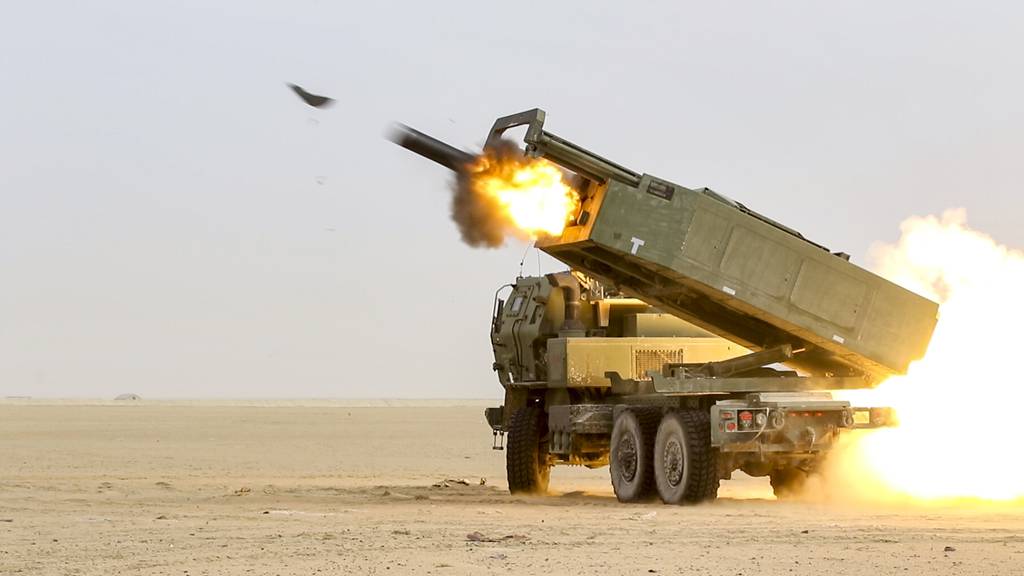WASHINGTON — The U.S. Army is reorganizing its Program Executive Office Missiles and Space to focus on the integrated fires mission, the office’s chief said.
“This is the construct that we need to have within the PEO to be agile, to be flexible, and not just meet those requirements that we see today, but to be able to bend as needed for those requirements that are coming tomorrow,” Maj. Gen. Robert Rasch said Aug. 8 at the Space and Missile Defense Symposium in Huntsville, Alabama.
The PEO is moving from having eight program managers to five that all fall under an integrated fires-focused portfolio.
The five different program offices will be Fires Radars and Sensors, Integrated Fires Mission Command, Air-and-Missile Defense Fires, Operational and Strategic Fires, and Aviation and Ground Fires.
Additionally, the PEO will have an Integrated Fires Rapid Capabilities program office.
RELATED

The projects under Fires Radars and Sensors will be the Lower Tier Air and Missile Defense System, Sentinel, AN/TPQ-50, AN/TPQ53, AN/TPQ-36, AN/TPQ-37, the Range Radar Replacement Program, and the Army Long-Range Persistent Surveillance — deployed in several global locations to defend against aircraft, cruise missiles and drones.
The Integrated Fires Mission Command portfolio will include the Integrated Air and Missile Defense Battle Command System, the Integrated Collaborative Environment, the Integrated Fire Control Network, and the Joint Tactical Ground Station, to name a few.
The Air and Missile Defense Fires areas of responsibility will be the Indirect Fires Protection Capability Increment 2, Stinger missile, Avenger system, National Advanced Surface-to-Air Missile, Expanded Mission Area Missile, Interim Maneuver-Short Range Air Defense system, Patriot Advanced Capability-3 missile, PAC-3 Missile Segment Enhancement missile, Patriot launcher and C-RAM Intercept Land-based Phalanx Weapon System.
RELATED

The Precision Strike Missile, the Guided Multiple Launch Rocket Systems, Army Tactical Missile Systems, High Mobility Artillery Rocket System, and the Multiple Launch Rocket System will fall under Operational and Strategic Fires.
Javelin, Hellfire, Tube-launched Optically Tracked Wire-Guided missile, Improved Target Acquisition and the Lethal Miniature Aerial Munition will be a part of Aviation and Ground Fires.
Under the Integrated Fires and Rapid Capabilities portfolio will be Counter-Unmanned Aircraft Systems, Long-Range Hypersonic Weapon, and the Mobile Low, Slow Unmanned Aerial Vehicle Integrated Defense Systems.
All of the products living under the PEO Missiles and Space umbrella will remain, it’s just a matter of shifting them around, Rasch said, and that’s the easy part.
“What we have lacked in the past is really a systems-of-systems look at the requirements as they come into our PEO,” Rasch said, and the new organization will “make sure that we really understand how we need to implement these from a materiel perspective.”
Rasch noted that going forward a lot of focus will be on the sensors portfolio to figure out “how we can truly make best use of the various sensors we have on the battlespace to provide better situational awareness that enables everything, that truly enables the concept or integrated fires that is needed to support multidomain operations.”
The newly organized PEO will reach a full-operational capability by the first quarter of fiscal 2021, Rasch said. “You ask: ‘Why so long?’ … We have a little bit of work to do before I can start turning over all the locks, so we are in deep mission analysis right now.”
Moving products around to different portfolios is easy, but “when we start looking at funding lines, we start looking at leadership across the varied PM offices, you start looking at the functional support that exists within those,” Rasch said. “We are going to make sure we can, deliberately, over the next year and half.”
Jen Judson is an award-winning journalist covering land warfare for Defense News. She has also worked for Politico and Inside Defense. She holds a Master of Science degree in journalism from Boston University and a Bachelor of Arts degree from Kenyon College.








